Selling Out: Ignoring Corruption for the Temporary Wealth Image June 16, 2015
Doug
Wakefield
“What
happens to price in a bidless market? It goes off a cliff….
Investors in stocks, bonds, and real estate are being herded off the cliff by the Federal Reserve. The name of the game in the New Normal is to force investors large and small into risk assets. When the risk assets blow up, the herd plunges headlong over the cliff en masse.” [The Fed is Funneling the Investing Herd Off the Cliff, Charles Hugh Smith, June 12, 2015]
We are quickly coming to a point where the global party of “unlimited credit” backstopped by the highest authorities in global finance, central banks, can no longer stop what has already been repeated many times for centuries; the breaking of the stock and bond bubbles. In fact, the current bubble literally is facing the question of who will win in the game of money itself.
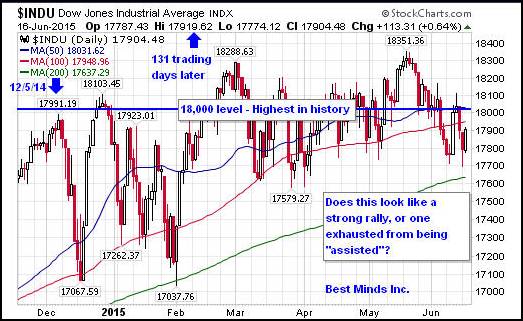
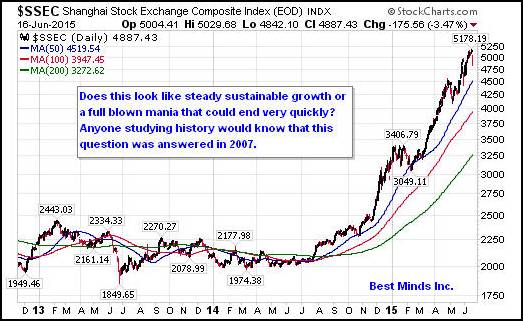

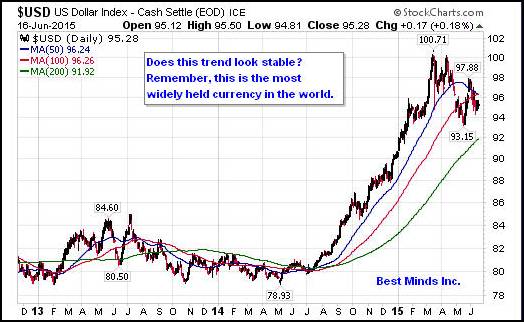
As we wait
for the latest Fed press release (June 17) to feed trading algorithms at 2:00
EST, we back away from the near term. Instead of the relentless pursuit of “the
bottom line”, we will examine the question, “Why is this happening again?” from
an ethics point of view.
During bull
markets, when the majority are enjoying the ride up, ethics always takes a back
seat to bottom lines. Only when trillions in losses are racking up across the
landscape, does ethics and the lessons from history become more important than
chasing the temporary wealth illusion.
Join the
Crowd or Flee From It?
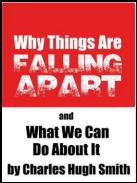 Charles Hugh Smith’s book, Why Things Are Falling Apart
and What We Can Do About It (2012), has two ideas that we all should have
considered three years ago, and based on the comments from one of his recent
articles, has become far more critical
this summer:
Charles Hugh Smith’s book, Why Things Are Falling Apart
and What We Can Do About It (2012), has two ideas that we all should have
considered three years ago, and based on the comments from one of his recent
articles, has become far more critical
this summer:
- `”Conformity. Studies have found that the need
to ‘fit in’ leads people to accept blatant falsehoods if the majority of
those around them have already chosen the falsehood. This is the lesson of
‘the Emperor has no clothes.”
- “Overconfidence, also called hubris. This is
the root of the phrase, ‘pride goeth before a fall.’ The individual who is
supremely confident in the superiority of his judgment is an individual who
will ignore evidence that he might be wrong.”
This becomes
even harder, when the Chairman of the Federal Reserve publicly TELLS everyone
that he is artificially inflating assets so everyone FEELS richer. Anyone
thinking about his statement from September 2012 when QEIII was launched
understands he was telling everyone this scheme was only temporary.
Fed
Seeking to Create Wealth, Not Just Cut Rates, Yahoo Finance, Sept 14 ‘12
“The Federal
Reserve wasn’t just trying to drive down interest rates when it announced on a
third round of bond purchases Thursday.
It was wants to make people feel wealthier – and more willing to spend.
‘…if the feel
that their financial situation is better because their 401(k) looks better or
for whatever reason - their house is
worth more – they’re more willing to go out and spend,’ Chairman Bernanke told
reporters. ‘That’s going to provide the demand that firms need in order to be
willing to hire and to invest.’”
How many
people do you know who believe that borrowing lot’s of money to make one’s
“wealth effect” look good, actually changes the fact that they are BORROWING
from their future to have that image today. How could Bernanke
have ignored this basic principle of personal and business finance?
So what
happens when a herd of investors, large and small, want to lock in their gains
from Bernanke’s short-term experiment of “more debt will make you FEEL wealthy”?
Will all of this new debt in the system go away, or will the public’s feelings
change when the latest credit fueled bubble burst, bringing with it far more
than massive financial losses again?
"Vogue editor
Diana Vreeland's motto, 'Fake it, fake it', is now the First Commandment of the
spin-doctor and the commercial maker. As Vreeland advises, 'Never worry about
the facts. Project an image to the public.' The art of success is to create a
world 'as you feel it to be, as you wish it to be, as you wish it into
being.'" When
No One Sees: The Importance of Character in an Age of Image (2000), Os
Guinness, pg 2.2 [Quoted in Destroy a Currency,
Extend a Rally, 11/8/14]
I Want Cash: Who Will Buy My “All Time High” Shares?

“Some investors take
comfort in the fact that spreads (i.e., the price between the bid and ask) have
remained low and healthy. But market depth is far lower than it was, and we
believe it is a precursor of liquidity. …The likely explanation for the lower
depth in almost all bond markets is that inventories of market - makers’
positions are dramatically lower than in the past. For instance, the total
inventory of Treasuries available to market makers today is $1.7 trillion, down
from $2.7 trillion at its peak in 2007.
Meanwhile, the Treasury
market is $12.5 trillion; it was $4.4 trillion in 2007.”
[JP
Morgan Shareholder letter from Jamie Dimon, April 8, 2015, pg 31]
Now are the global banks
and central banks just now figuring out that the Fed’s “wealth effect”, of
buying tens of billions of Treasuries each month since Bernanke’s Sept. 2012
“feel wealthier and keep spending” scheme was announced, has actually been
REDUCING liquidity, thus placing ALL investors in a market environment where
risk is must higher right now than three years ago?
The following is a quote
from UBS’ Michael Schumacher, from a Zero Hedge article that was released a
week before Bernanke’s announcement, and pulled from a Special Edition issue of
The Investor’s Mind released on Sept 21, 2012:
“The Fed owns all but $650 billion of 10-30 year nominal Treasuries. Taking out, say, $300 billion in long term Treasuries almost certainly would put tremendous pressure on liquidity in that market…Ploughing ahead with a large, fixed size QE program could cause liquidity to tank.”
And of course, any central banker reading the December 2008 BIS Quarterly Review right AFTER the collapse of world credit markets in the fall of 2008 would have known this long before 2012:
“The scarcity of US Treasuries for repo transactions also manifested itself in a sharp increase in the number of Treasury settlement fails. Whereas fails to deliver Treasuries had average around $90 billion per week during the two years preceding the crisis, they rose to above $1 trillion during the Bear Stearns episode and then soared to record highs of almost $2.7 trillion following the Lehman default.” [pg 46]
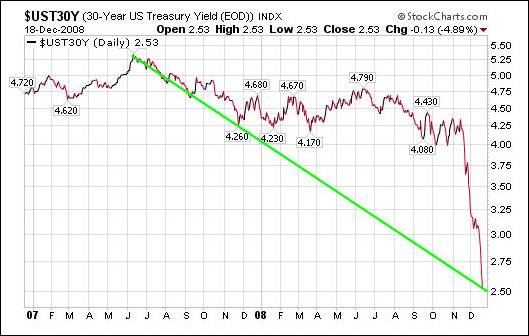
[Source – The Big, the Bull and the Banker, Dec 18 ‘08]

So when it is time to sell, who will buy all of the shares at “all time high” prices?


Stock Buybacks; Focusing
on Casino Wins or Economic Good?
“Your mind thinks
thoughts and the pictures are broadcast back as your life experience. You not
only create your life with your thoughts, but your thoughts add powerfully to
the creation of the world. If you thought that you were insignificant and had
no power in this world, think again. You mind is actually shaping the world
around you." The Secret, Rhonda Byrne, [Quoted at its 82nd week on the top two
"Hardcover Advice" of the NY Times Best Sellers and in The Secret of Retirement
Planning, Aug. 20, 2008]
Blaise Pascal
once said, “Ordinary people have the ability not to think about things they do
not want to think about.” When one
considers the massive levels of debt that corporations have taken on in order
to buy back their own stock, a method which has given the impression to
millions of investors that “the crowd” is buying the market, then millions of
investors and thousands of advisors have a great deal to think about this
summer, even if they do not desire to.
But hey, who can blame
the public, since societies are build around the motto, “We can always borrow
our way to the top”, as central bankers have so firmly endorsed, especially
since 2008.
Yet therein lies
the problem. The last 6 years of massive intervention by central banks, using
the “nuclear money option”, has created a society that is addicted to big daddy
always intervening to “remove risk”, which never will happen.
Delay it rearing
its ugly head, yes. Remove it, no.
Ultimately, like
a person who knows the oil light is on in their car and keeps driving, ignoring
reality will eventually have far more serious consequences.
Stanley
Drunkenmiller, one of the most famous hedge fund managers in the world, was
quoted in a recent article on CNBC (1), for his view the
current record breaking levels of corporate stock buybacks: “I think it’s nuts.
If you’re running a business for the long term, the last thing you should be
doing is borrowing money to buy your own stock.”
The same article
pointed out that April was a record breaking month for stock buybacks being
authorized, reaching $141 billion. If the rest of the year continued at this
pace, we would reach $1.2 trillion, which would be higher than the previous
annual high of $863 billion set in 2007.
If one’s method
for investing is “believe and shape the world around you”, then who cares about
history. If one’s method is based on learning from our past and history, then
we remember that the previous stock buying record year of 2007, was the start
of the largest destruction of wealth, over $60 trillion, in history.
While doing my
own research for this piece, I learned from another article, this one from the
Boston Globe (2), that since the early ‘80s when I
was in my late 20s, that the nation’s top publicly traded companies have gone
from having 70% of their profits available to reinvest in their own business,
to just 2 percent in 2014.
Bevis Longstreth,
was a commissioner for the SEC in 1982 when the rule was changed that launched
the buy back boom. Consider his insights of how distorted our markets have
become:
“It is a terrible thing for the economy because the growth of the
economy and the growth of individual companies depends upon their reinvesting
in their business and expansion into other lines of business, and paying 98
percent of your earnings out as dividends or stock buybacks implies that you
have no future.”
Bob Ordemann’s
team of 80 software developers and engineers were among the 8% or 6,000 workers
that Cisco announced were being laid off last year. These individuals, many of
whom had worked to build the company during their careers, were slammed with
the reality that at the same time they were being laid off to “cut costs”, the
company was continuing to spend billions to buy back its own stock, a move
which would reduce the number of shares on the open market and help “assist”
its price in the financial markets.
If this were an
isolated incident, it would be a moral travesty. Since this data supports that
this has become a national epidemic, every investors trusting in a “comfortable
retirement” while thousands of workers are axed, should understand that their
own financial futures are at risk from these unsustainable schemes. When major
corporations are stuck with declining stock prices and their creative and loyal
workforce is not there to rebuild TRUE long-term growth, how will that impact
the “we” and the “me”?
 [Source
– Cisco
Sums It Up: Terminates 8% of Workforce While Buying Back $1.5 Billion in Stock,
Zero Hedge, Aug 13, ‘15]
[Source
– Cisco
Sums It Up: Terminates 8% of Workforce While Buying Back $1.5 Billion in Stock,
Zero Hedge, Aug 13, ‘15]
With David Kostin’s
– Chief Equity Strategist at Goldman Sachs – in May 2013 and November 2014
presenting a 2015 year end value on the S&P 500 of 2100 (3),
the record stock buybacks in April, record corporate debt levels, drastic
reduction in US Treasuries in the hands of market makers to provide liquidity
WHEN the major US stock indices break under their “nirvana lines” (4),
then where will our markets find big money to keep stocks climbing when they
start falling again like last October, when the Dow lost almost 1500 points in
a little over 3 weeks?
Twenty years ago
we might say to someone who said our markets were even “rigged” or
“manipulated” to achieve the “always bull” image, that they were crazy, or one
who believed a conspiracy theory. Well, no one willing to read can say that
today. A “winning at all costs”
attitude in order to continue “feeling wealthier in the short term”, will
ultimately bring severe consequences for us all, no matter who were are, or
where we stand on the socioeconomic ladder.
DOJ
Launches Probe Of Treasury Market Manipulation, Zero Hedge, June 8, '15
Six
Banks Pay $5.8 Billion, Five Guilty of Market Rigging, Bloomberg, May
20,’15
Big
Banks Fined $2.3 Billion Over Illegal Libor Cartels, More Fines on the Way, Forbes,
Dec 4 ‘13
How many times
will tens of millions of investors trust the powers of OZ more than the lessons
from the previous 28 financial bubbles spanning the last four centuries? (5)
Sources:
(1)
Q: Why Do Markets Fall Late In the Day?
A: Buy Backs, CNBC, 6/1/15
(2)
Feast
for Investors Sells Workers Short, The Boston Globe, 5/31/15
(3)
Investment Parachutes:
Do You Have Yours?, Doug Wakefield, 3/27/15
(4)
The Nirvana Trade,
Doug Wakefield, 7/24/13
(5)
“We have in fact
searched through all the data that we can find on currencies, commodities, and
stock markets and have found 27 bubbles. Unlike Chairman Greenspan, we have no
problem defining a bubble: we arbitrarily use a two standard deviation events,
the kind that would normally occur randomly every 40 years. Predictably (at
least for believers in regression to the mean), all 27 bubbles broke and went
all the way back to the preexisting trend. If it does not do this, it will be
the first failure to do so in modern times.” [GMO Quarterly Letter, “The
Countdown Continues” (October 2004) Jeremy Grantham, pg 6, quoted on page 135
in Riders
on the Storm: Short Selling in Contrary Winds (Jan ’06), Doug Wakefield
with Ben Hill]
Being a Contrarian, Remembering 2000
The
big shift from longs to shorts and shorts to longs grows stronger with ever
delay, warning any student of history.
Click here to start the
next six months reading the newsletters and trading reports. It is
extremely dangerous for so many people to place so much faith in the first ever
“six month all time high”, or “Dow 18,000 level”. (12/5/14 – reaches 17,991 for
first time in its history. 131 trading days later on 6/16/15, it closed at
17,903.)
On a Personal Note
Check
out Living2024. It is my personal
blog, not business. I wanted to have a place to write some deeper stories about
where this entire drama seems to be taking us all. Check out my latest post, The Unlimited
Mammon Master.
Doug
Wakefield
President
Best Minds Inc. a Registered Investment
Advisor
1104
Indian Ridge
Denton,
Texas 76205
Phone
- (940) 591 - 3000
Best Minds, Inc is a registered
investment advisor that looks to the best minds in the world of finance and
economics to seek a direction for our clients. To be a true advocate to our
clients, we have found it necessary to go well beyond the norms in financial
planning today. We are avid readers. In our study of the markets, we research
general history, financial and economic history, fundamental and technical
analysis, and mass and individual psychology.